According to National Geographic, fish have been on Earth for more than 500 million years. Fish are extraordinary pets and can live in a variety of habitats, including bowls. They’re low maintenance since they don’t need to be walked. Moreover, they are fun to watch.
People commonly have a misconception that fish cannot survive in a bowl due to their restrictive environment. However, several types, preferably small cold-water fish, can live happily and comfortably with limited space, heat, or filter, such as Guppies, White Cloud Minnow, and many more.
Below we’ll talk about some different types of fish that can survive in bowls of at least 3 gallons and give you recommendations on how to take care of them.
1. White Cloud Mountain Minnow
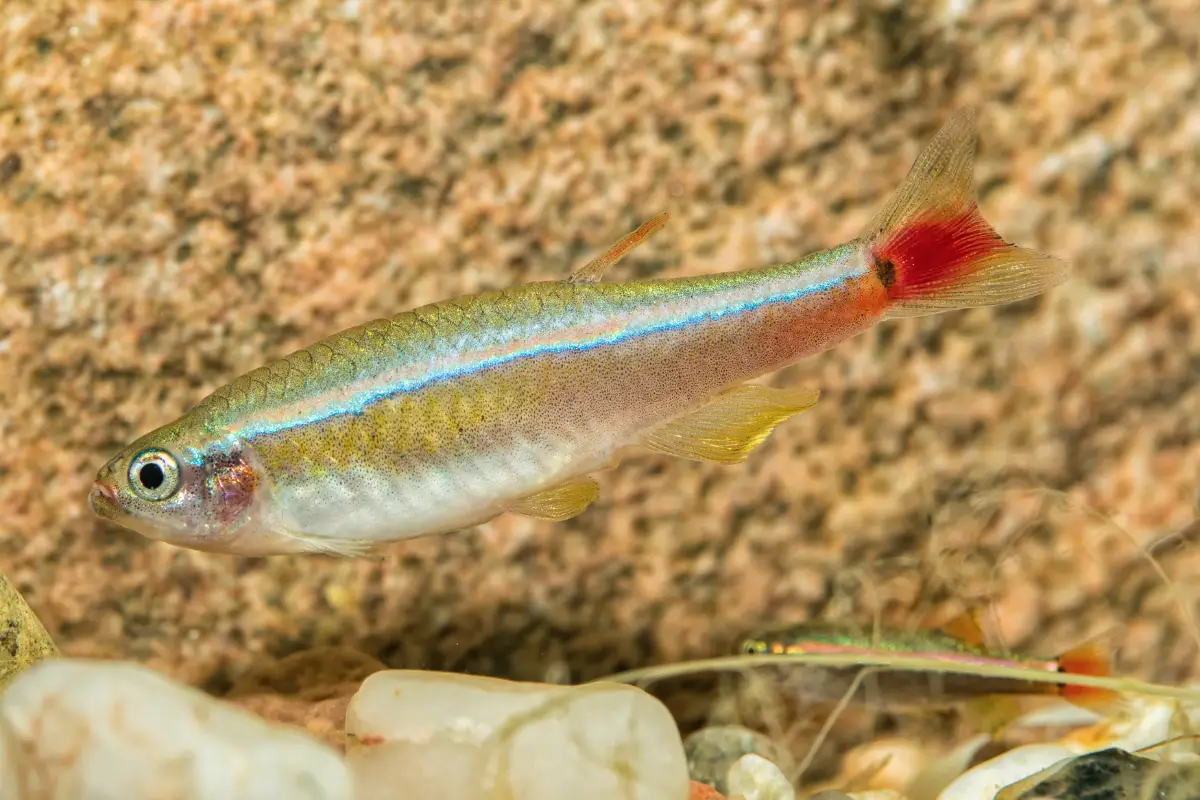
- pH: 6 to 8
- Average life span: 2 to 3 years
- Behavior: Peaceful with other fishes of the same size
- Heater: No
- Filter: No
- Preferred temperature: 60-70 degrees Fahrenheit
- Care level: Easy
White Cloud Minnow (Tanichthys albonubes) is an intriguing type of fish that can survive in almost any habitat, including bowls. It tolerates different temperatures and does not need an air pump because it breathes atmospheric oxygen through its skin. As long as the correct water conditions are met, heater and filter are not required.
2. Guppies
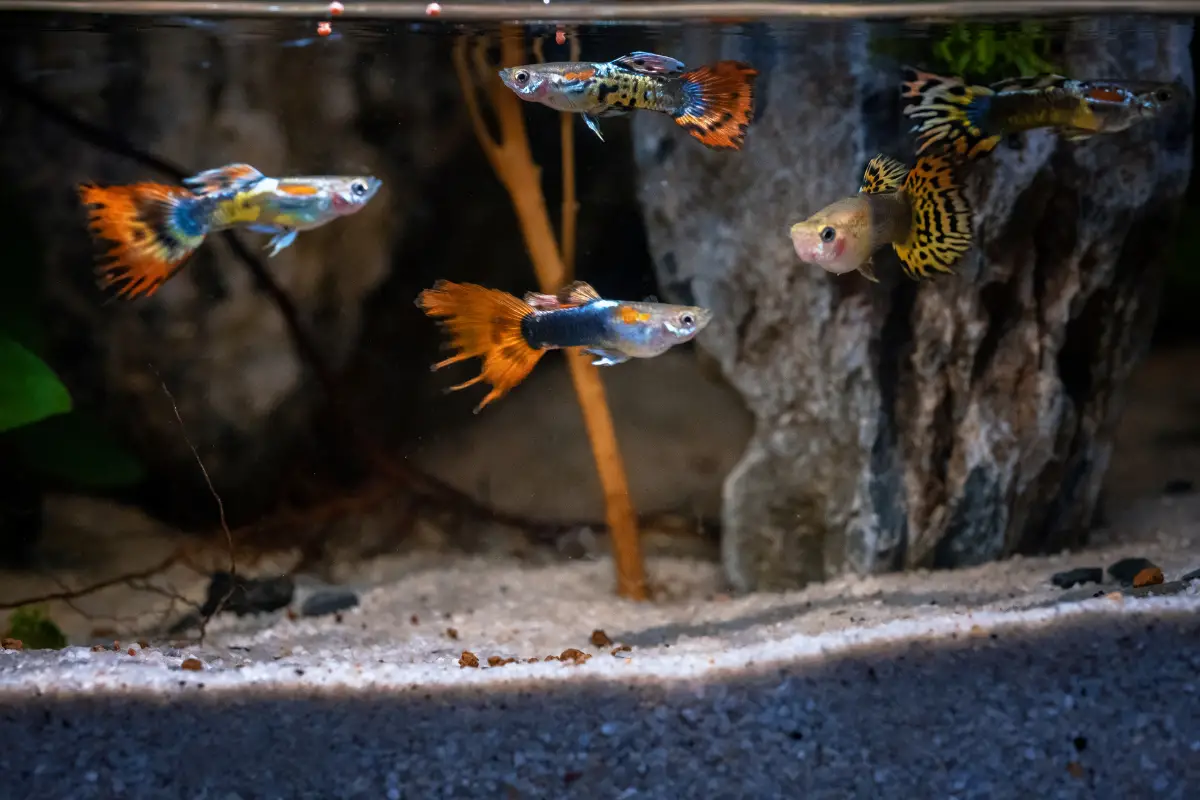
- pH: 6.5 to 7.5
- Average life span: 2 to 3 years
- Behavior: Peaceful with other fishes of the same size
- Heater: Yes
- Filter: No
- Preferred temperature: 68 to 78 degrees Fahrenheit
- Care level: Beginner to Intermediate
Guppies (Poecilia reticulata) are an amiable type of fish that can live together in groups. They come in several different colors and patterns, but they’re mainly known for their brilliant blue tails. Their water should be kept clean and moderately warm since they come from tropical regions. Filters are unnecessary if the correct water conditions are maintained.
3. Bettas (Siamese Fighting Fish)
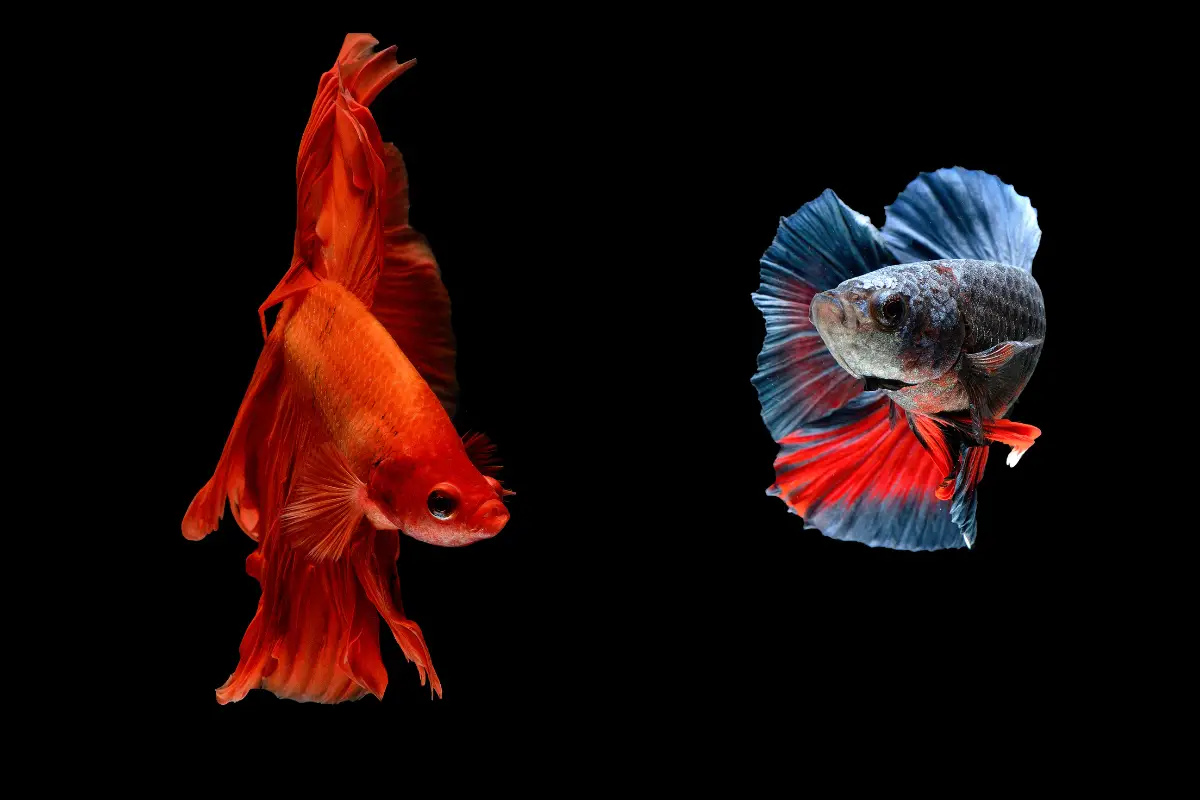
- pH: 6.8 to 7.4
- Average life span: 3 to 5 years
- Behavior: Aggressive with other Betta males and other fish with large fins
- Heater: Yes
- Filter: No
- Preferred temperature: 75-86 degrees Fahrenheit
- Care level: Easy to intermediate
Betta fish (Betta splendens) are prevalent and amazing, as they can live in a variety of habitats. It has brilliant coloration and long flowing fins that are noticeable in males. They should be kept only with other Bettas because the male Betta may die if placed with another species.
4. Fire Neon Tetras
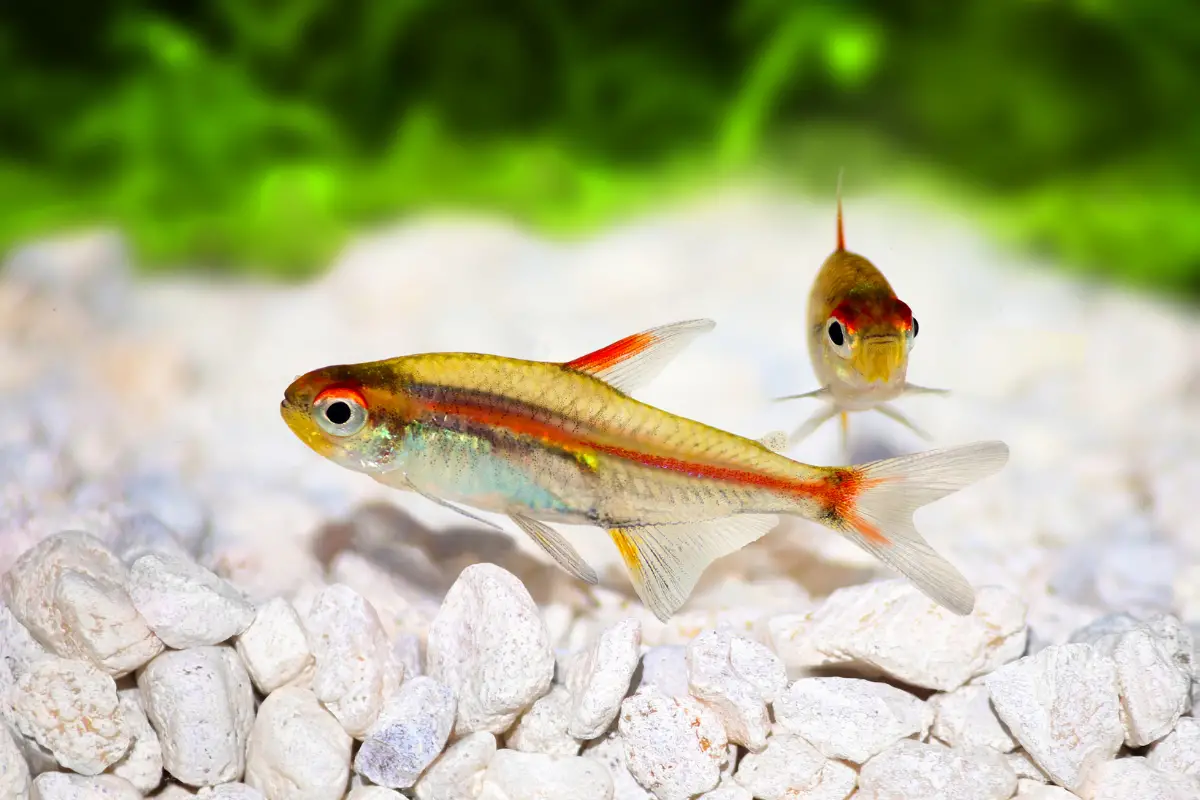
- pH: 7
- Average life span: 5 years
- Behavior: Peaceful with other fishes of the same size
- Heater: Yes
- Filter: Yes
- Preferred temperature: 68-79 degrees Fahrenheit
- Care level: Intermediate
Fire Neon tetras (Hemigrammus erythrozonus), also known as Flame tetras or glowlight tetras, are extremely popular and active schooling fish that come in bright colors such as bright red or blue. They’re very peaceful and do not bother any other types of fish they share space with as long as there’s plenty of room to swim around. They should have plenty of low-light hiding spaces since they come from dark water with dense vegetation roots.
5. Zebra Danio
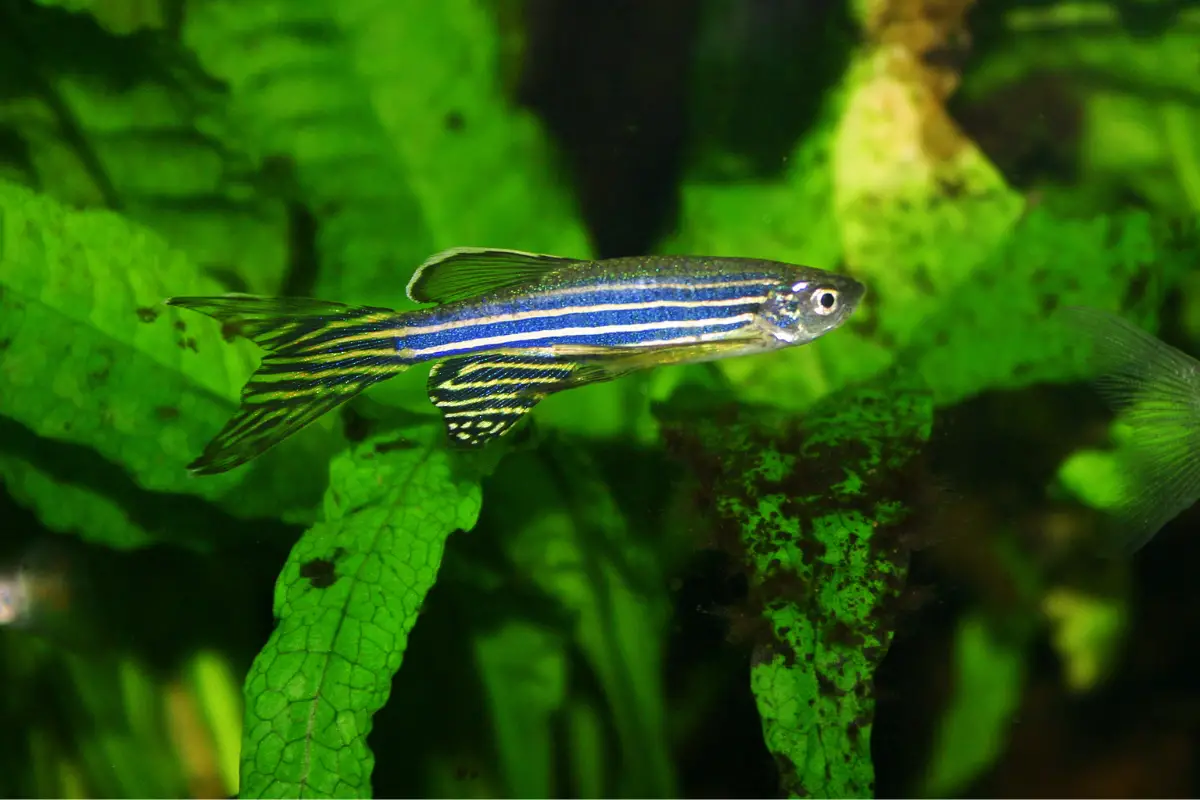
- pH: 6.5 to 7
- Average life span: 5 years
- Behavior: Peaceful with other fishes of the same size
- Heater: No
- Filter: Yes
- Preferred temperature: 64 to 74 degrees Fahrenheit
- Care level: Easy
Zebra Danio (Danio rerio) has a color of bright blue and black stripes, hence its name. They are capable of adapting to a wide range of water conditions. They swim quickly and are very active, so they require space in the bowl. They should be kept in a vegetative environment with diffused lighting.
6. Harlequin Rasbora
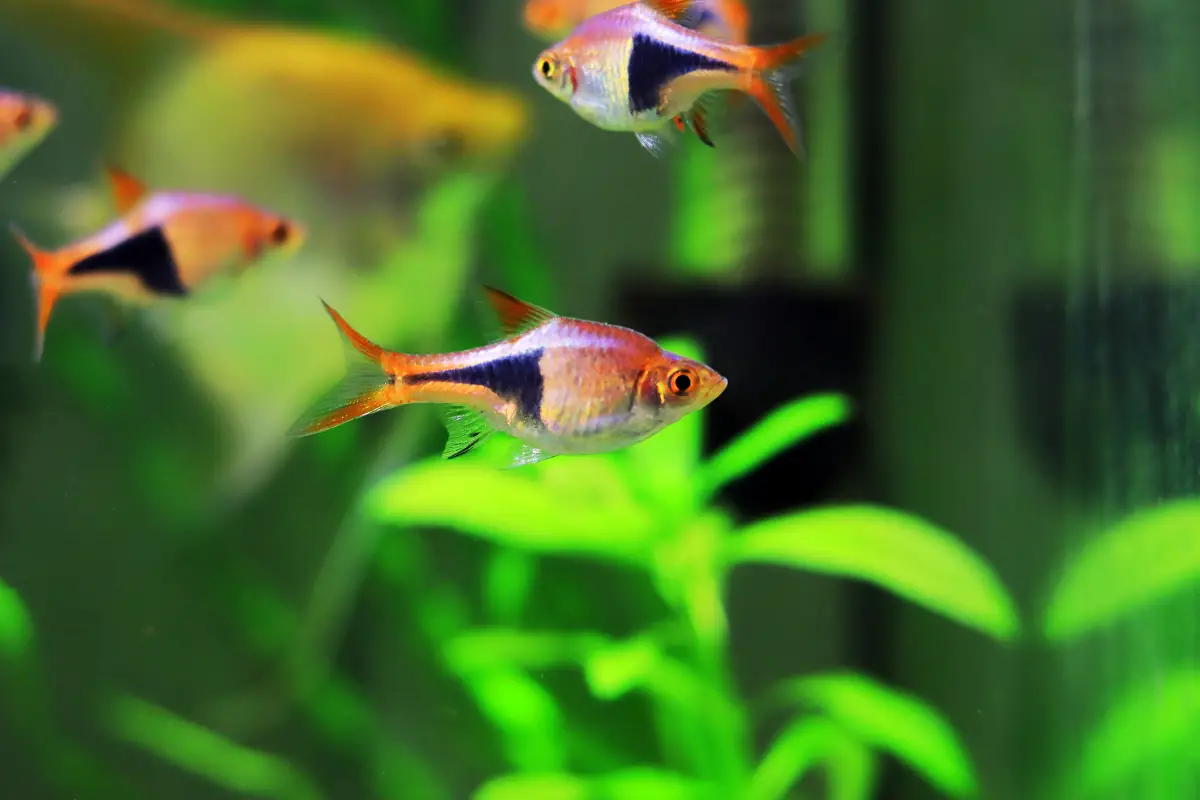
- pH: 6 to 7.5
- Average life span: 6 years
- Behavior: Peaceful with other fishes of the same size
- Heater: Yes
- Filter: Yes, but it does not require a strong flow. Prefers a slow-moving stream or river environment.
- Preferred temperature: 73 to 82 degrees Fahrenheit
- Care level: Intermediate
Harlequin Rasbora (Trigonostigma heteromorpha) is another peaceful type of fish that can live in a group. It’s primarily brown with red and orange stripes, hence its name. The Harlequin should be kept in an environment with lots of plants and low lighting for hiding places.
7. Swordtails
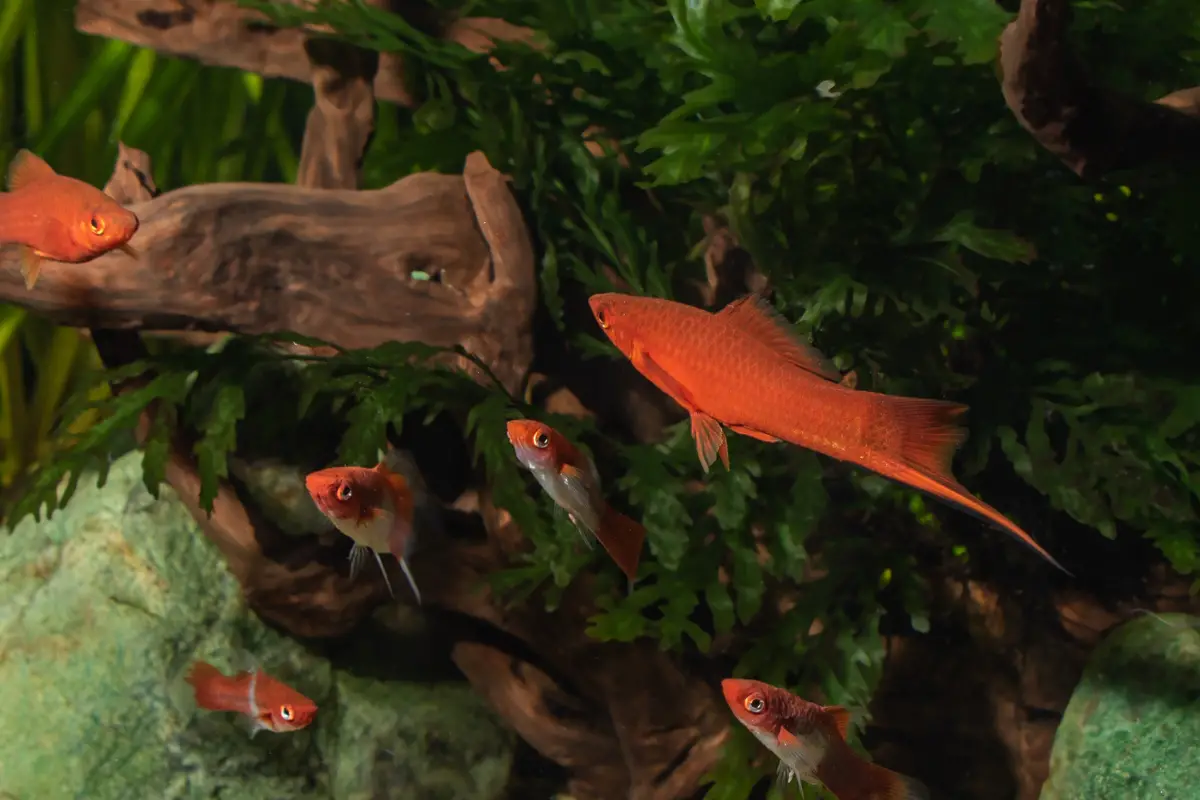
- pH: 7 to 8.5
- Average life span: 3 to 5 years
- Behavior: Peaceful with other fishes of the same size but avoid putting more than one male in a bowl
- Heater: Yes
- Filter: No
- Preferred temperature: 64 to 82 degrees Fahrenheit
- Care level: Easy
Male swordtails (Xiphophorus hellerii) are a type of fish that is more aggressive than other types, especially when they reach sexual maturity. They have long flowing tails and brilliant colors to go with them, hence their name. The male Swordtail has an extended fin on its back called the “sword,” which distinguishes it from female fishes in the species. They should be kept in a well-planted tank with moderate lighting and water flow. They can breathe atmospheric oxygen through their skin.
8. Pygmy Corydoras
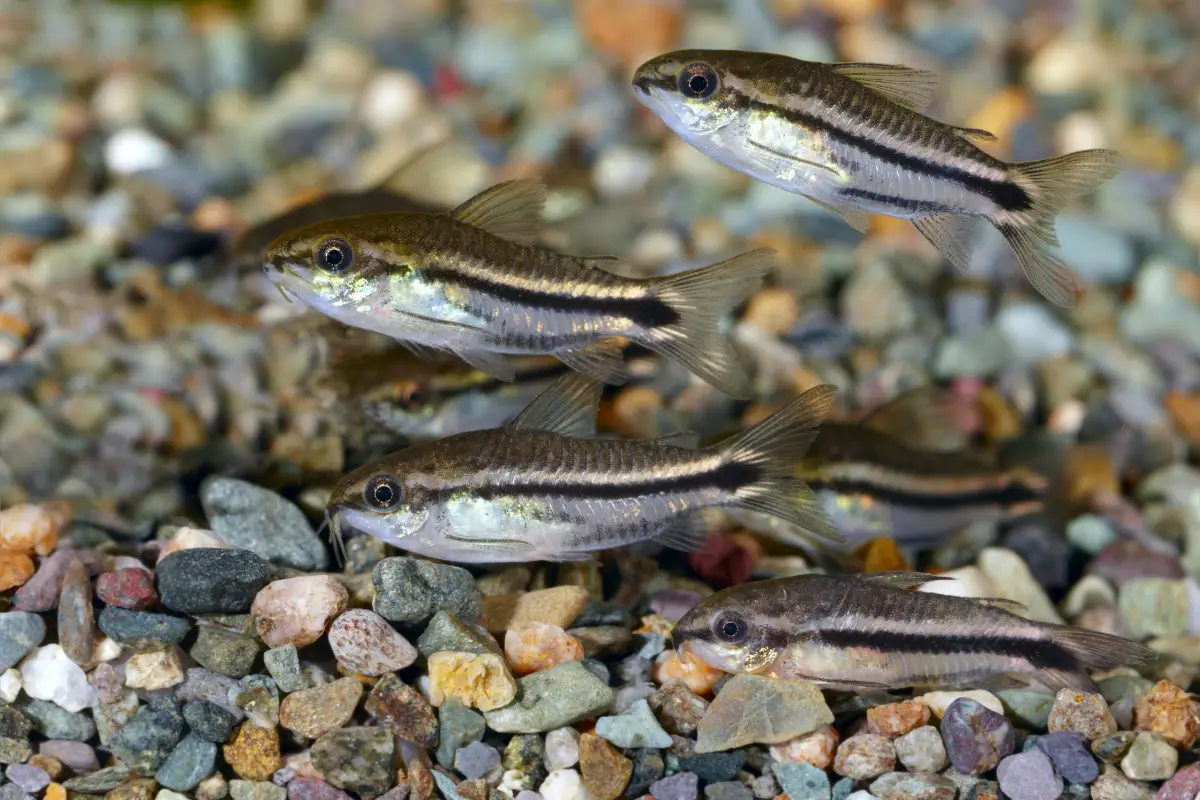
- pH: 6.4 to 7.4
- Average life span: 3 years
- Behavior: Peaceful with other fishes of the same size and preferably in groups (schooling)
- Heater: Yes
- Filter: No
- Preferred temperature: 72 to 79 degrees Fahrenheit
- Care level: Easy
Pygmy Corydoras (Corydoras pygmaeus) is a catfish species with armor-like skin and whiskers with tiny eyes at the end. They are some of the most peaceful fish that can live in a bowl. However, they are very timid and should be kept with other fish of similar size for company, preferably bottom-dwelling fishes like shrimp or snails. Their armor provides them protection against attacks from fin nippers.
9. Paradise Fish
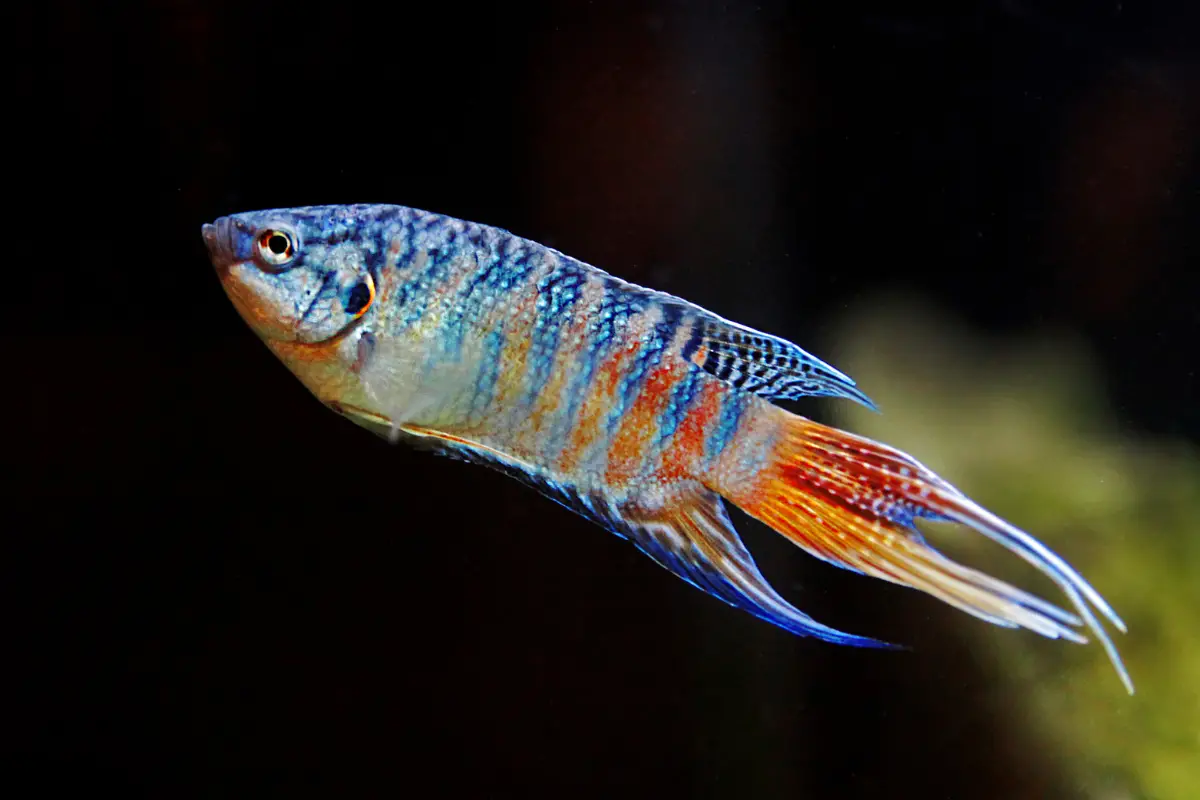
- pH: 5.8 to 8
- Average life span: 6 to 8 years
- Behavior: Peaceful with other fishes of the same size and preferably in groups (schooling)
- Heater: Yes
- Filter: No
- Preferred temperature: 61 to 79 degrees Fahrenheit
- Care level: Easy
Paradise fish (Macropodus opercularis) are live-bearing egglayers that prefer tropical climate and water conditions with warm water. Like Mollies, Paradise fishes have dorsal fin spines with venomous properties, so you should always handle them carefully when cleaning their tank or if one is injured or sick.
10. Hatchetfish
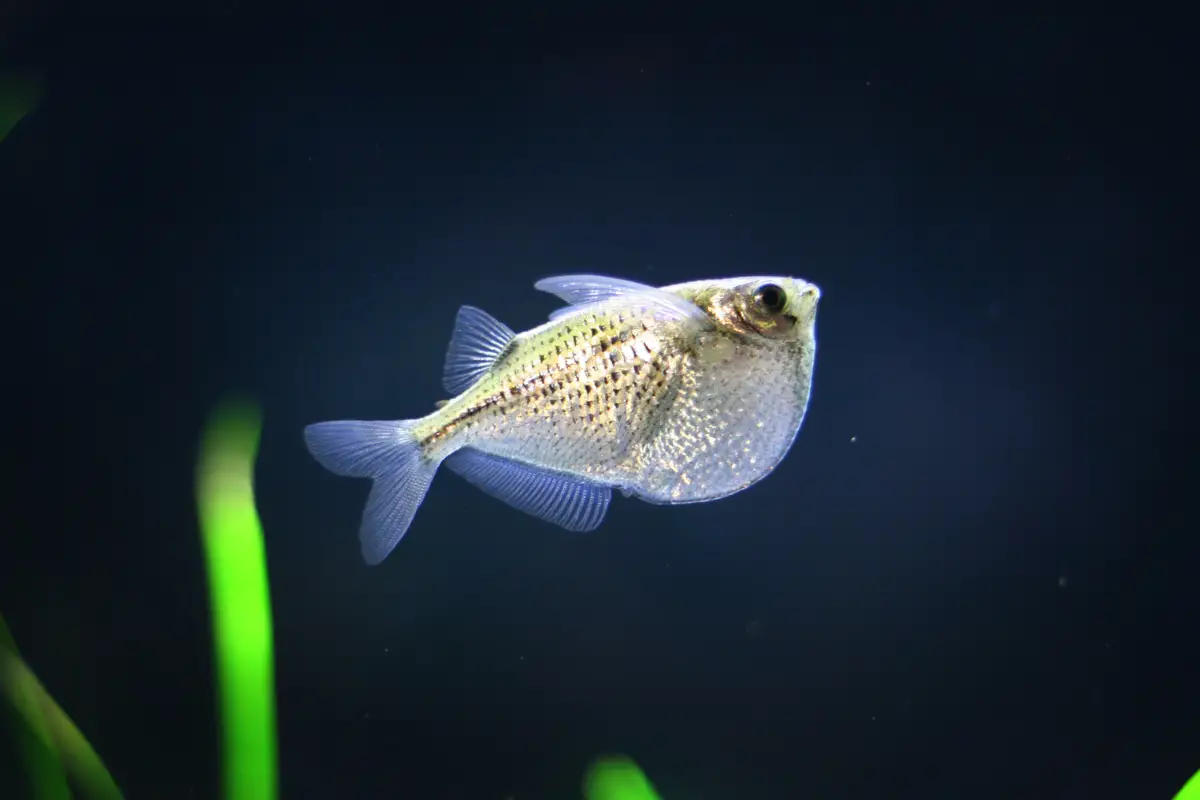
- pH: 4 to 7
- Average life span: 5 years
- Behavior: Peaceful with other fishes of the same size and preferably in groups (shoaling)
- Heater: Yes
- Filter: Yes
- Preferred temperature: 78 to 82 degrees Fahrenheit
- Care level: Intermediate to Advanced
Hatchetfish (Gasteropelecidae f.) are small, rarely growing more than an inch long. They are schooling fish that should be kept in groups of at least five or more fishes for company. They should be placed in a mimic of blackwater environments.
11. Congo Tetra
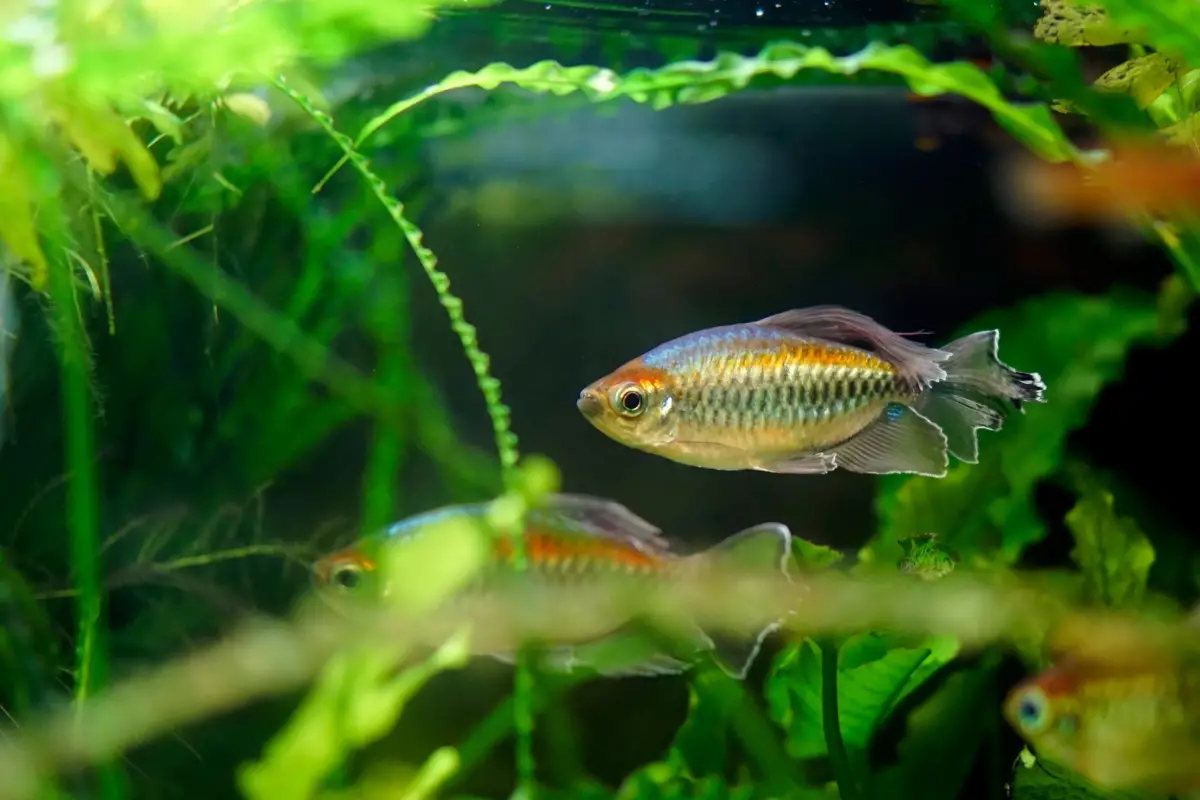
- pH: 6 to 7.5
- Average life span: 3 to 5 years
- Behavior: Peaceful with other fishes of the same size and preferably in groups (shoaling)
- Heater: Yes
- Filter: Yes, but it does not require strong flow. Prefers a slow-moving stream or river environment.
- Preferred temperature: 73 to 82 degrees Fahrenheit
- Care level: Intermediate
Congo tetra (Phenacogrammus interruptus) is freshwater fish that come from the tropical regions of South America. They have a bright silver body with red stripes along their sides. These colors become more intense when these fishes are kept in schools or shoals (groups). Their habitat should be well-planted to create an environment akin to their natural habitat by hiding among them during daytime hours yet showing fully at night time for hunting food around the area.
12. Beacon Fish (Head and Tail Light Tetra)
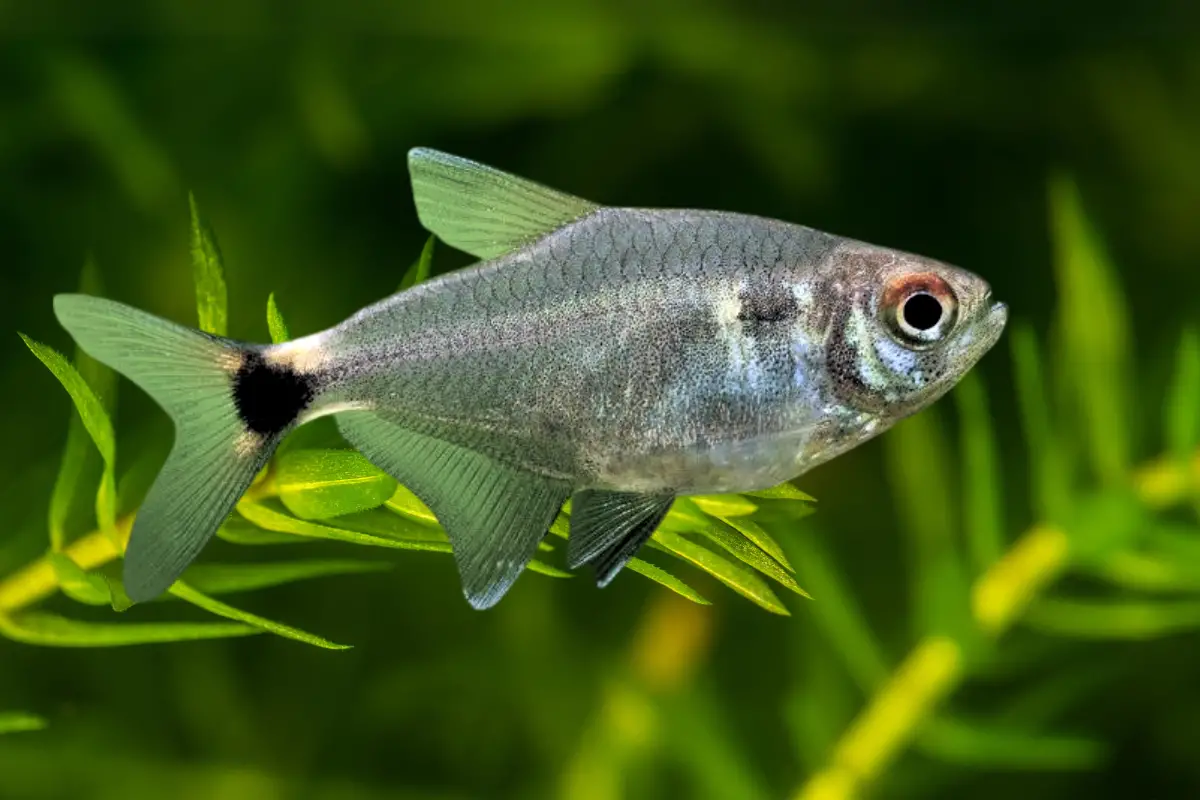
- pH: 6 to 8
- Average life span: 5 years
- Behavior: Peaceful with other fishes of the same size and preferably in groups (shoaling)
- Heater: Yes
- Filter: Yes, but it does not require a strong flow. Prefers a slow-moving stream or river environment.
- Preferred temperature: 72 to 79 degrees Fahrenheit
- Care level: Easy
Beacon Fish (Hemigrammus ocellifer) are one type of freshwater fish that needs to be placed in a habitat with floating or tall plants. This helps provide them some shade. In addition, they should have enough swimming space in the middle for an arrangement.
13. Panda Corydoras
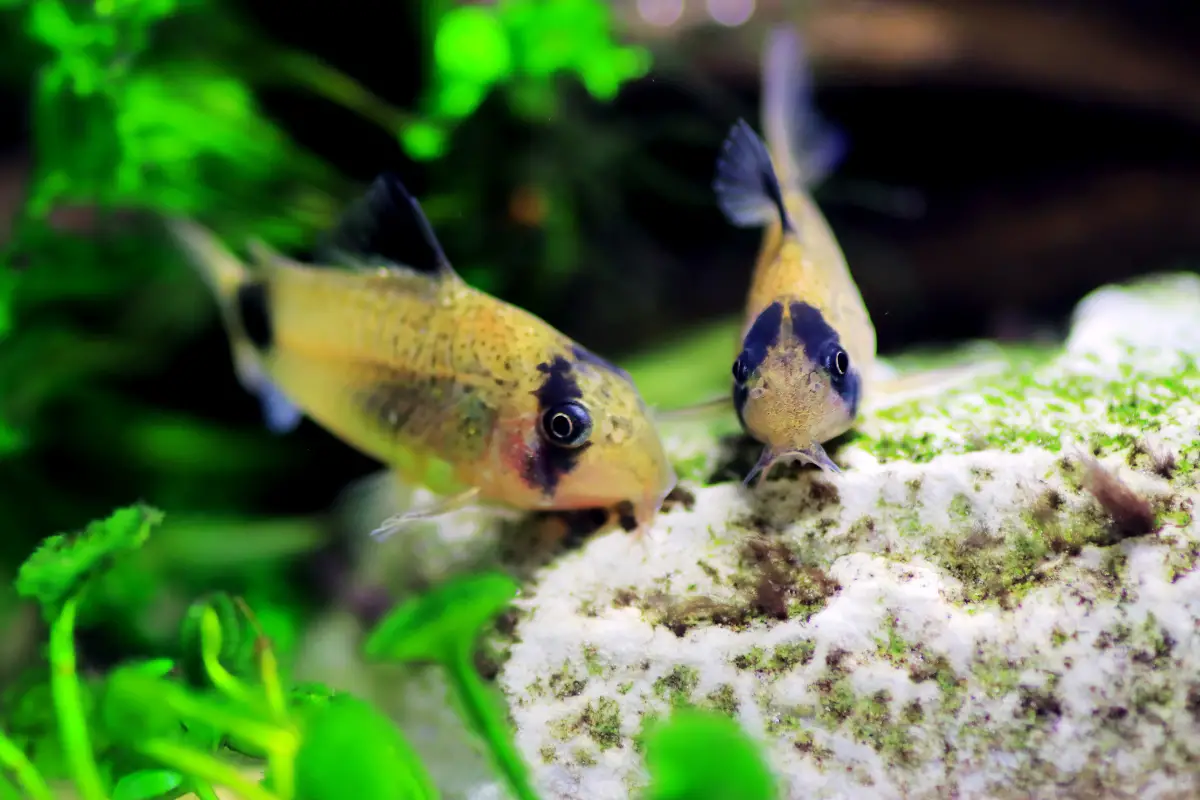
- pH: 6 to 7
- Average life span: 10 years
- Behavior: Peaceful with other fishes of the same size and preferably in groups (shoaling)
- Heater: Yes
- Filter: Yes, to mimic river currents
- Preferred temperature: 68 to 77 degrees Fahrenheit
- Care level: Intermediate
The Panda Corydoras (Corydoras panda) has an off-white body with prominent deep black markings. They are highly social fish and need good quality water. Moreover, the substrate to be used should be soft and delicate. Caves, rocks, and driftwood can help the fish feel comfortable in their new environment.
14. Dwarf Gourami
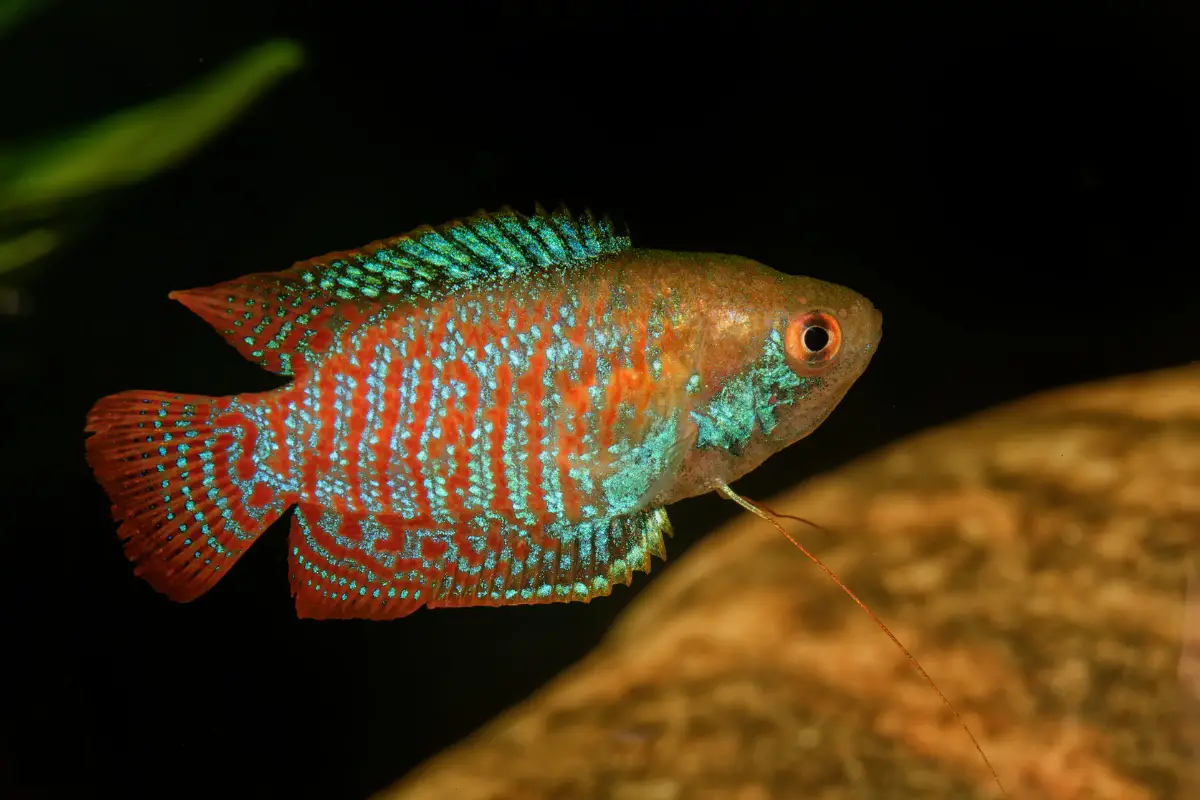
- pH: 6 to 7.5
- Average life span: 4 years
- Behavior: Peaceful with other fishes of the same size
- Heater: Yes
- Filter: Yes, but it does not require a strong flow. Prefers a slow-moving stream or river environment.
- Preferred temperature: 72 to 82 degrees Fahrenheit
- Care level: Intermediate
Dwarf Gourami (Trichogaster lalius) are fish that come from the warm waters of Thailand and Malaysia. They are known for their unique appearance, including metallic scales in shades of red, yellow, or copper with black bands on them. These colors become more intense when these fishes are kept in shoals. Therefore, their habitat should be well-planted so they can create an environment close to their natural habitat.
15. Pea Puffer Fish
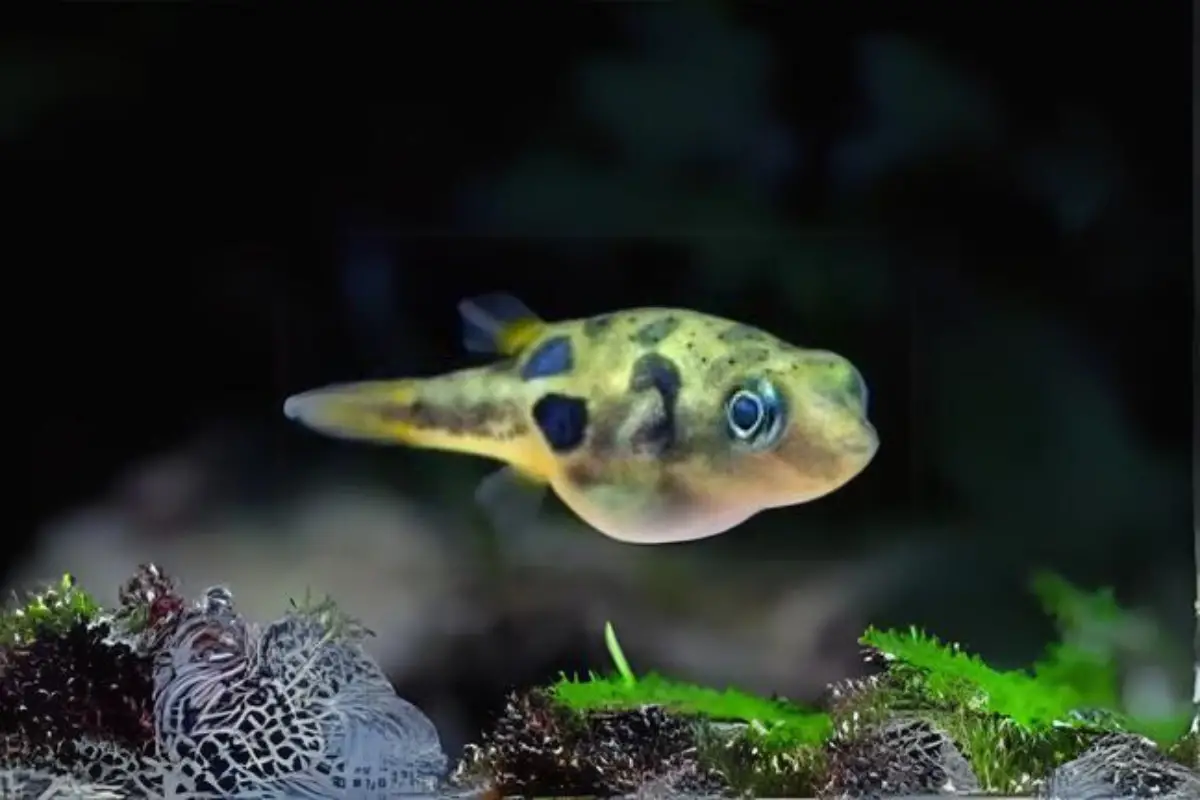
- pH: 7 to 8
- Average life span: 4 years
- Behavior: Aggressive
- Heater: Yes
- Filter: Yes, with a sponge filter
- Preferred temperature: 72 to 82 degrees Fahrenheit
- Care level: Intermediate
Pea Pufferfish (Carinotetraodon travancoricus) has a small rounded body and prefers a well-maintained environment with lots of plants to hide in. In addition, these fish have a labyrinth organ that enables them to breathe oxygen from the surface.
How Do You Keep A Fish In A Bowl?
The most important thing to keep in mind is that any fish you buy will need a certain amount of space. This means you should calculate the size of your bowl according to this particular requirement before making the purchase. Having an adequate bowl size can help the fish feel more comfortable.
Try not to overcrowd the bowl. Depending on the size, it is ideal only to keep one to two fishes in one bowl, especially if the fish are aggressive. The water in the bowl should be replaced every week and treated using a water conditioner, neutralizing chlorine and ammonia.
Place plants to create an oxygenated environment for the fish and rocks, pebbles, or sand at the bottom to help mimic their natural habitat. It’s necessary to use a filter to keep the water clean for high-maintenance fish.
Filter cartridges are to be replaced monthly to maintain a favorable environment. Heater, on the other hand, should be used for tropical fish.
The bowl should have adequate lighting but not too much that could result in the growth of algae. If you are using artificial light, you should turn it off at night since leaving it on could stress the fish.
Remember to maintain the temperature of the bowl depending on the type of fish you avail. Maintaining the desired temperature can help the fish thrive and last longer.
How To Clean A Fish Bowl?
Prepare the New Water
- Fill a clean bucket or bowl with tap water and adjust it to its correct temperature. Use a thermometer to help with this process.
- Add a water conditioner product to help neutralize the water and detoxify heavy metals.
- Test the water using water test strips. This could help you determine at what pH level the water is at. Adjust it to the proper pH level for your type of fish
Remove the Fish from the Bowl
- Turn off all of the equipment in your aquarium to avoid accidents. Unplug any heater, filters, or powerheads if you are using one.
- Transfer an adequate amount of water from the bowl to another container where the fish can be temporarily be relocated.
- Transfer the fish using a net or by using your hands. Place one hand under its belly while supporting it with your other hand around its neck area behind its gills.
- You may place a towel on top of the temporary container to help reduce the light and lessen the stress of the fish.
Clean the Fish Bowl
- Remove the plants and other decorative objects as well before cleaning.
- Drain the water from the bowl. Use a strainer to catch the gravel.
- Fill the bowl with hot water and dish soap.
- Use a scrub brush to clean off any algae or dirt on the sides of the bowl
- Rinse all of your supplies in hot water, then let them air dry
Reassemble the Fish Bowl and Return the Fish
- Place all the gravel, rocks, pebbles, plants, and other objects back to their original position.
- Put fresh water back into your fish’s home, making sure it is at least one inch higher than before you washed it out.
- Get the fish out of the temporary container and return the fish to its bowl.

